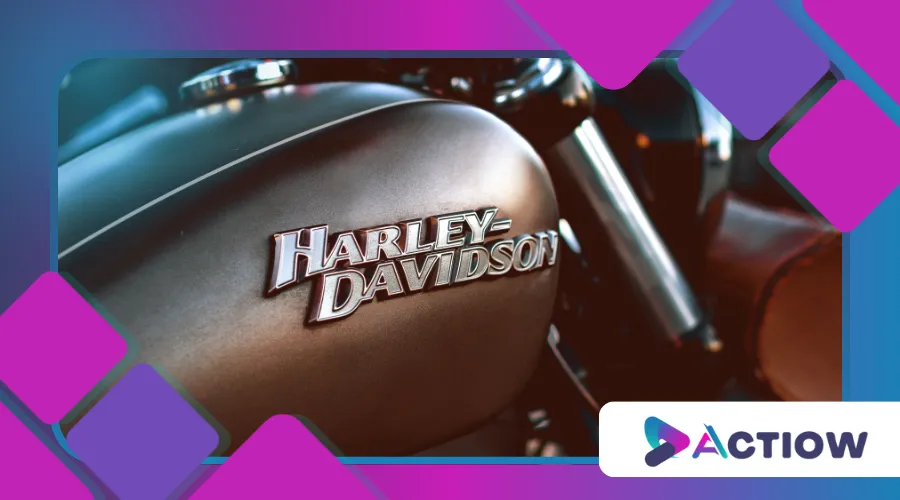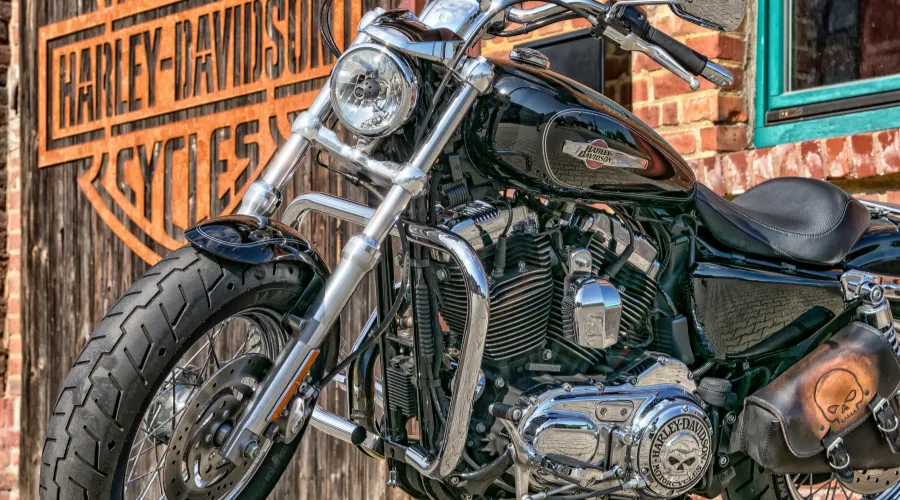The History of Harley-Davidson

Anúncios
Few names evoke the spirit of the open road like Harley-Davidson.
For over a century, this iconic brand has symbolized freedom, rebellion, and American craftsmanship.
From its humble beginnings in a small Milwaukee shed to its status as a global cultural phenomenon, the story of Harley-Davidson is one of resilience, innovation, and an unwavering commitment to its riders.
Anúncios
The brand’s motorcycles have become synonymous with the American dream, representing a lifestyle that values independence and adventure.
As the company continues to evolve, its rich history serves as a foundation for future innovations while maintaining the essence of what makes Harley-Davidson truly unique.
The Birth of an Icon: 1903 and Beyond
In 1903, William S. Harley and Arthur Davidson built their first motorcycle in a modest wooden shed.
This single-cylinder engine, producing just 3 horsepower, marked the beginning of a revolution.
By 1909, the company introduced its first V-twin engine, a design that would become synonymous with the brand.
The early years were challenging, but Harley-Davidson’s focus on quality and performance quickly set it apart from competitors.
As word spread about the reliability and performance of their motorcycles, demand began to grow, leading to increased production and innovation.
The company’s involvement in World War I further cemented its reputation.
Over 20,000 motorcycles were deployed, showcasing their durability and reliability in the harshest conditions.
This experience not only solidified Harley-Davidson’s standing in the motorcycle industry but also established its connection to American military history.
| Year | Milestone |
|---|---|
| 1903 | First Harley-Davidson motorcycle built |
| 1909 | Introduction of the V-twin engine |
| 1917 | Over 20,000 motorcycles used in World War I |
The Roaring Twenties and the Great Depression
The 1920s were a golden era for Harley-Davidson.
The brand became a staple of American culture, with motorcycles appearing in films, races, and even police departments.
However, the Great Depression hit the industry hard.
Despite plummeting sales, Harley-Davidson survived by diversifying its product line, including the production of industrial engines and three-wheeled vehicles.
During this time, the company also focused on building a loyal customer base, creating a community around their brand that would last for generations.
This period also saw the rise of the “Knucklehead” engine in 1936, a technological leap that set new standards for power and performance.
The Knucklehead’s overhead-valve design became a hallmark of Harley-Davidson engineering, influencing future models for decades.
+ Adventure Motorcycles: The Best Bikes for Long Trips
Post-War Boom and the Rise of a Subculture
Returning soldiers sought the thrill of the open road, and the brand became a symbol of freedom and individuality.
The 1950s and 1960s saw the emergence of motorcycle clubs, with Harley-Davidson at the center of this cultural shift.
These clubs fostered a sense of brotherhood and camaraderie among riders, further solidifying the brand’s identity as a lifestyle choice.
The introduction of the Sportster in 1957 catered to a younger, more performance-oriented audience.
Meanwhile, the Electra Glide in 1965 brought luxury to touring motorcycles, featuring an electric starter and a sleek, modern design.
The success of these models helped establish Harley-Davidson as a dominant player in the motorcycle market, appealing to a wide range of riders.

| Model | Year Introduced | Significance |
|---|---|---|
| Sportster | 1957 | Targeted younger riders with a sporty design |
| Electra Glide | 1965 | First touring bike with an electric starter |
Challenges and Reinvention in the Late 20th Century
The 1970s and 1980s were turbulent times for Harley-Davidson.
Competition from Japanese manufacturers, coupled with internal struggles, threatened the company’s survival.
However, a bold turnaround strategy in the 1980s, including a leveraged buyout and a focus on quality control, saved the brand.
This strategic shift not only improved product quality but also revitalized the company’s image.
The introduction of the Evolution engine in 1984 marked a new era of reliability and performance.
Harley-Davidson also embraced its heritage, launching the Heritage Softail in 1986, which combined classic styling with modern engineering.
This blend of old and new appealed to both traditionalists and new riders, helping to expand the brand’s reach.
++ Top 10 Fastest Motorcycles in the World
Harley-Davidson in the 21st Century: Innovation Meets Tradition
Today, Harley-Davidson continues to balance tradition with innovation.
The company has expanded its lineup to include electric motorcycles, such as the LiveWire, while maintaining its core lineup of cruisers, touring bikes, and custom models.
This commitment to innovation is evident in their efforts to appeal to a new generation of riders, who may be more environmentally conscious.
In 2021, Harley-Davidson announced its “Hardwire” strategic plan, focusing on profitability, brand strength, and expanding its global reach.
The plan includes a commitment to electric mobility, aiming to lead the industry in this emerging segment.
By investing in electric technology, Harley-Davidson is positioning itself for future growth while staying true to its roots.

The Cultural Impact of Harley-Davidson
Beyond its engineering achievements, Harley-Davidson has become a cultural icon.
The brand’s motorcycles have appeared in countless films, from Easy Rider to The Terminator, and its logo is instantly recognizable worldwide.
This cultural significance has helped to create a strong community among riders, fostering loyalty that transcends generations.
The annual Sturgis Motorcycle Rally and Daytona Bike Week are testaments to the enduring appeal of the Harley-Davidson lifestyle.
These events attract thousands of riders and enthusiasts, celebrating the freedom and camaraderie that the brand represents.
According to a 2020 survey by Statista, Harley-Davidson remains the leading motorcycle brand in the United States, with a market share of over 30%.
This dominance reflects not only the quality of its products but also the loyalty of its riders.
For more insights into Harley-Davidson’s cultural impact, visit Harley-Davidson’s Official Website.
The Future of Harley-Davidson
As the automotive industry shifts toward sustainability, Harley-Davidson faces new challenges and opportunities.
The company’s investment in electric motorcycles and its commitment to reducing its environmental footprint demonstrate its adaptability.
However, the brand must also navigate changing consumer preferences and increased competition.
This requires a delicate balance between maintaining its traditional appeal and embracing new technologies.
One thing is certain: Harley-Davidson’s legacy is far from over.
With over a century of history behind it, the brand continues to inspire riders around the world, embodying the spirit of adventure and the pursuit of freedom.
Conclusion
From its origins in a small shed to its status as a global icon, the history of Harley-Davidson is a testament to the power of innovation, resilience, and cultural impact.
As the company looks to the future, it remains committed to its core values while embracing new technologies and opportunities.
For riders and enthusiasts alike, Harley-Davidson is more than a motorcycle—it’s a way of life.
Whether you’re a seasoned rider or a curious admirer, the story of Harley-Davidson is a reminder that the open road is always calling.
And with every twist of the throttle, the legacy continues.
